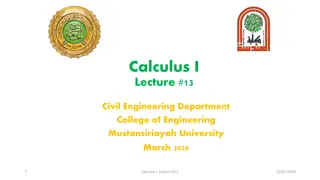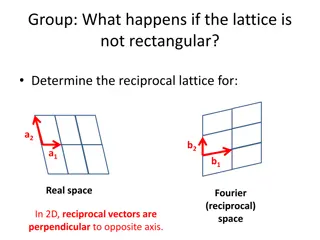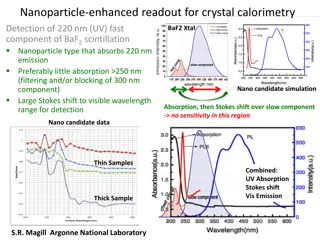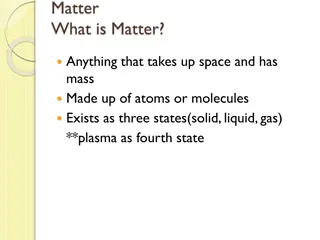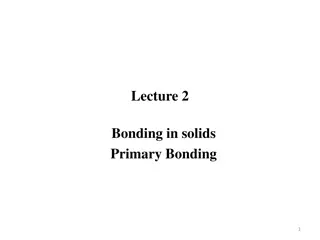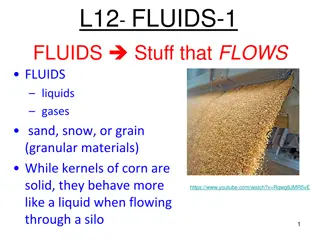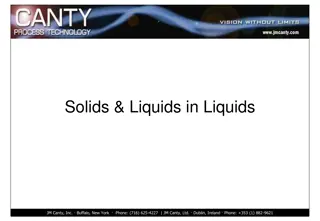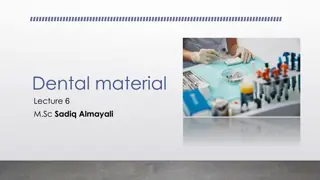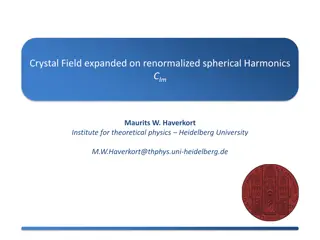Understanding Crystal Structures and Types of Solids in Materials Science
Crystal structures in materials science involve the arrangement of atoms in solids, with examples of crystalline and amorphous solids like metals and glass. Explore concepts like energy packing, definitions of crystalline materials, unit cells, BCC and FCC lattices, HCP structures, and Miller Indices in crystallography.
Download Presentation

Please find below an Image/Link to download the presentation.
The content on the website is provided AS IS for your information and personal use only. It may not be sold, licensed, or shared on other websites without obtaining consent from the author. Download presentation by click this link. If you encounter any issues during the download, it is possible that the publisher has removed the file from their server.
E N D
Presentation Transcript
CRYSTAL STRUCTURE PROF. DR. B. J. LOKHANDE SCHOOL OF PHYSICAL SCIENCES
TYPES OF SOLIDS In a Crystalline solid, atoms are arranged in an orderly manner. The atoms are having long range order. Example : Iron, Copper and other metals, NaCl etc. In an Amorphous solid, atoms are not present in an orderly manner. They are randomly arranged. Example : Glass
ENERGY AND PACKING Non dense, randompacking Energy typical neighbor bond length typical neighbor bond energy r Energy Dense, regular packing typical neighbor bond length r typical neighbor bond energy Dense, regular-packed structures tend to have lower energy.
SOME DEFINITIONS Crystalline material is a material comprised of one or many crystals. Incrystal, atoms or ions show a long-range periodic arrangement. Single crystal is a crystalline material that is made of only one crystal (no grain boundaries). Grains are the crystals in a polycrystalline material. Polycrystalline material is a material comprised of many crystals (single-crystal material that has only one crystal). Grain boundaries are regions between grains of a polycrystalline material. A unit cell is the smallest part of the unit cell, which when repeated in all three directions, reproduces the lattice.
UNIT CELLS AND UNIT CELL VECTORS All unit cells may be described via these vectors and angles.
UNIT CELLOF BCC LATTICE Fe (Up to 9100C and from 14010C to Melting Point), W, Cr, V, \
UNIT CELL OF FCC LATTICE Al, Cu, Ni, Fe (9100 C-14010C)
MILLER INDICES Miller Indices are used to represent the directions and the planes in a crystal Miller Indices is a group of smallest integers which represent a direction or a plane y z y z x [021] [111] [012] [111] x [100] [110] b
MILLER INDICES Select any point on the direction line other than the origin Find out the coordinates of the point in terms of the unit vectors along different axes. Specify negative coordinate with a bar on top Divide the m by the unit vector along the respective axis. Convert the result into the smallest integers by suitable multiplication or division.







